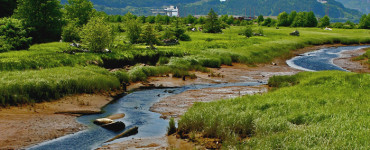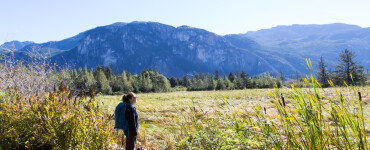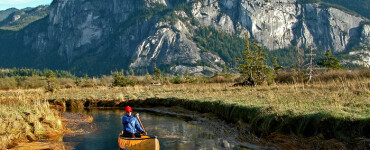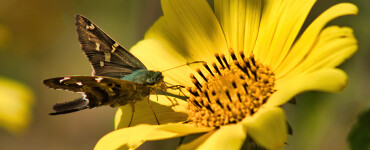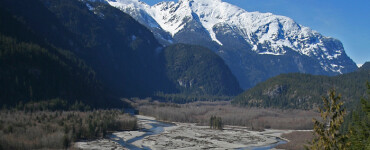Environment
The Squamish Environment: Unique and Valuable
Squamish is at the north end of Howe Sound, where two rivers—the Squamish and Stawamus—meet the ocean. This area is a fjord estuary, which means it’s a long, narrow sea inlet formed by glaciers. It’s home to many plants and animals and is recognized as a key bird habitat by Birdlife International, supporting over 200 species of local and migrating birds.
Squamish has many streams and wet areas called riparian zones. These areas are important for fish because they provide food, shade, and help keep water temperatures stable. Healthy riparian zones also help absorb rainwater and reduce flooding. Wetlands in Squamish support amphibians, store water, and help clean it. Many of these wetlands dry up in summer and fill with water in winter.
The estuary isn’t just important for nature—it’s also used for recreation, trails, wind sports, and local industry.
Fast Facts:
- Squamish River provides 90% of Howe Sound’s fresh water.
- Fjord estuary: A sea inlet with steep sides, formed by glaciers (like Squamish).
- Delta estuary: A triangle-shaped area of sediment at a river’s mouth (like the Fraser River in Vancouver).
- Squamish River Watershed includes four main rivers: Mamquam, Cheakamus, Squamish, and Stawamus.
- Watershed: Land where all water drains into one main body of water.
- Riparian areas: Land next to streams and rivers—important for fish and water health.


